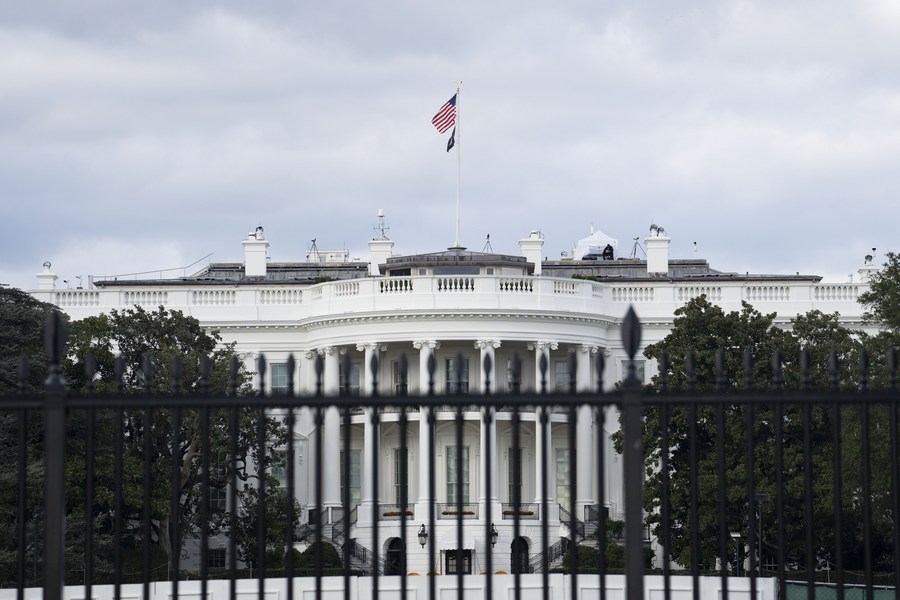Washington's economic, military strategies may be overstretching


Since 2011, when then United States president Barack Obama's administration launched the "Pivot to Asia" policy, the US elite have said that the country should put aside its interventions in the Middle East to focus on containing China in the Asia-Pacific region.
Since then, US troops have reduced their contingent in Iraq, where 2,500 soldiers remain, and haphazardly left Afghanistan in 2022.
Parallel to this, another relevant topic in the Middle East, the creation of a Palestinian state and the "two-state" solution, was abandoned. During this period, Israeli settlers occupied several territories in the West Bank ruled by the Palestinian National Authority, making the creation of a future sovereign state there almost impossible.
The Gaza Strip, administered by Hamas, remained isolated in a system that keeps more than 2 million people in a challenging humanitarian situation. The numerous resolutions of the United Nations General Assembly in favor of a solution to the conflict were vetoed by Washington.
Instead of seeking to implement the UN resolution that called for two states in 1948, the US supported rapprochement between Israel and Morocco, Sudan, the United Arab Emirates, and Bahrain, with which it established diplomatic relations in 2020. Additionally, Washington was negotiating a rapprochement with the government of Saudi Arabia, the most significant economic power in the region. It is worth remembering that Egypt and Jordan have already maintained stable relations with Israel for decades.
While the conflict in Palestine fell out of the spotlight of global media, Washington moved forward with its withdrawal from the Middle East and reorganized its forces in the "Indo-Pacific" region.
In 2018, the United States Indo-Pacific Command was restructured. After that, alliances such as the Quadrilateral Security Dialogue between the US, Australia, India and Japan, and AUKUS, the grouping of Australia, the United Kingdom and the US, were established with the stated aim of containing China's development. These positions were reaffirmed in September 2021, when President Joe Biden's administration announced the creation of the US "Indo-Pacific Strategy", which seeks to justify the change of focus to that region due to an alleged threat posed by Chinese development.
In practical terms, Washington has stimulated rivalries in China's neighborhood, creating hostile alliances and forcing an arms race that only interests US weapons sellers.
Since 2017, the US has organized several hostile actions against China, such as sanctions against government authorities, the widespread imposition of import tariffs against goods imported from China, threats against companies based in the Xinjiang Uygur autonomous region, and the imposition of a technological war seeking to stifle Chinese companies by suppressing the sale of cutting-edge semiconductors.
In this context, new tensions emerged in Eastern Europe in February 2022 when the Russia-Ukraine conflict broke out. Since then, NATO has been supporting Ukrainian troops with weapons, money and training, making the Ukraine crisis a proxy war against Russia. The US government as of early October had spent more than $75 billion on military aid to Ukraine.
On Oct 7, a new battlefront opened in the Middle East when Hamas militants carried out an incursion into southern Israel. In support of Tel Aviv's retaliation against the Palestinians in the Gaza Strip, Washington announced the sending of military aid and also positioned fleets in the Eastern Mediterranean to, in theory, block support from other Islamic nations.
Amid these challenges, the US Congress is trying to approve an extra $106 billion in military aid to support Israel, Ukraine and China's Taiwan. The measure has been delayed due to the political polarization between Democrats and Republicans, who are fighting a tough battle to approve the annual budget, which has been postponed until Nov 15.
It is essential to consider that the US is involved in three strategic fronts when facing internal difficulties related to the more vigorous growth of its public debt. In 2010, the debt was $13.5 trillion. In 2022, it reached $30.9 trillion. Fitch Ratings, on Aug 1, downgraded the US' long-term foreign-currency issuer default rating to AA+from AAA. The rating downgrade reflects in part the expected fiscal deterioration over the next three years and a high and growing general government debt burden.
In this sense, it would be worth asking whether the persistence of fiscal problems could indicate a deterioration in US hegemony in the next years, since the country's ability to deal with different strategic fronts could be limited by the lack of resources or by the population's resistance to increasing taxes.
British historian Paul Kennedy, who wrote the book The Rise and Fall of the Great Powers, formulated a fascinating concept of "imperial overstretch," which relates the fall of great powers to the moment when an empire extends beyond its economic-military capabilities. Could this moment be coming for the US?
The author is a professor of international political economy at Sao Paulo State University in Brazil.

































